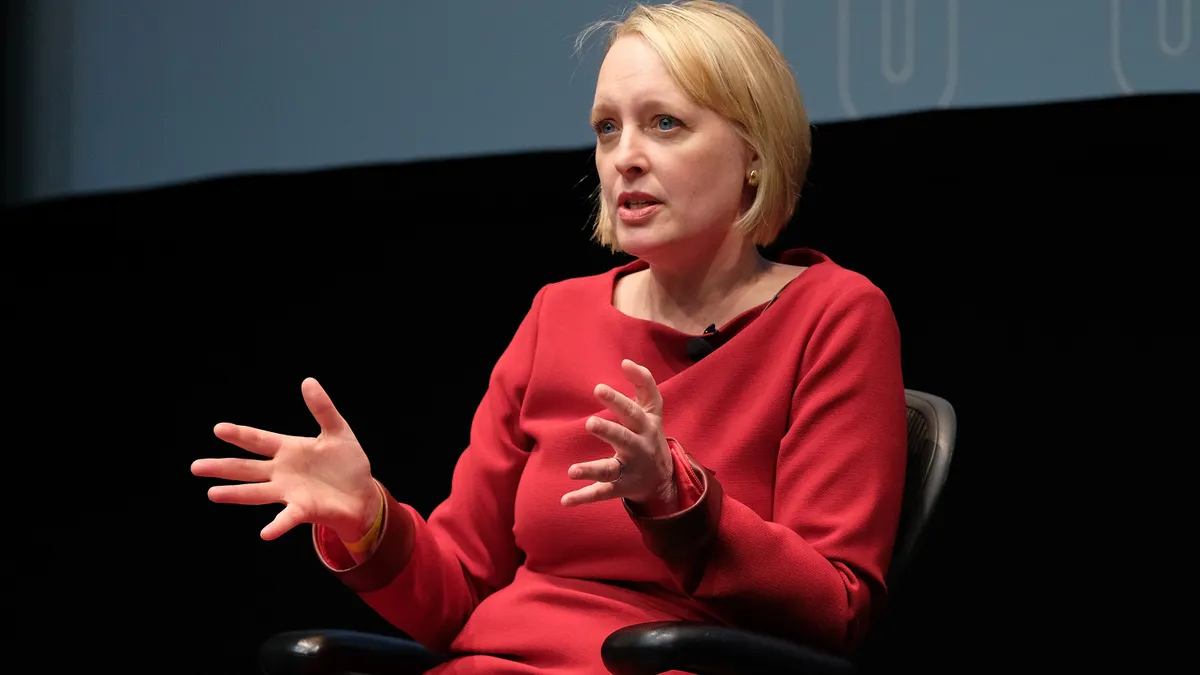The employment world marked a pivotal moment in the push for equal pay on Nov. 1 as New York City’s pay transparency law took effect.
The law requires city employers with four or more employees to disclose the minimum and maximum salary or hourly wage for each job, promotion or transfer opportunity performed, at least in part, in the city. Jurisdictions in at least 10 states have adopted some form of pay transparency requirement, but New York City is one of only a handful to mandate that pay or pay ranges be disclosed in all job postings.
The stated goal of the city’s law — as with other pay transparency statutes — is to address pay gaps in the workforce, though whether pay transparency laws are effective in this regard is still an open question. Just one week before its effective date, a panel of experts convened by Cornell University’s School of Industrial and Labor Relations on Oct. 25 spoke to that question, which may be older than some realize, according to Peter A. Bamberger, research director at the ILR School’s Smithers Institute.
“When you look at history, this topic is well over 100 years old,” Bamberger said, pointing to a 1919 memo written by management at Vanity Fair prohibiting employees from discussing pay with one another. In response to the memo, some of the magazine’s staff showed up to the office the next day wearing placards that displayed their salaries.
From there, Bamberger said discussion of pay transparency tended to split into two camps: pro-secrecy and pro-transparency. The former argued that secrecy allowed managers to avoid upward pressure on labor costs and more tightly link pay with performance while improving retention and avoiding jealousy between workers. The latter countered that transparency would reduce pay gap, motivate workers and create a climate of trust while facilitating “positive sorting,” or turnover of lower-paid, poorly performing employees.
Though a contentious issue, “there was hardly any evidence for any of these claims,” Bamberger said. And while the body of research on pay transparency has grown in the years since, the analysis of whether the practice is beneficial or harmful to workers can depend on a number of factors, including which form of transparency is practiced, who the stakeholders are and what outcomes policymakers are trying to achieve.
What does the research show?
Bamberger provided an overview of his research into pay transparency’s impact on six areas: individual performance; collaboration; retention; counterproductive work behavior; pay dispersion and mix; and societal-level effects.
When examining whether pay transparency would encourage employees to perform better, Bamberger said the practice “kind of worked” for employees who expressed sensitivity toward equity and fairness, “but for everyone else it didn’t.” His research led him to the idea that transparency impacted workers’ perceptions of how much they could gain by working harder, also known as performance pay instrumentality.
Pay transparency could benefit employees in that sense, Bamberger said, because it can give them more realistic expectations of what they stand to gain by putting in additional effort.
Additionally, studies of pay transparency measures in other countries have shown positive effects. A 2019 study of a Denmark law found a “decline in the pay gap very quickly after the law was passed,” Bamberger said, and a separate study of Canadian university faculty following the 2019 passage of provincial pay transparency law found a 30% reduction in the gender pay gap.
“It does reduce the pay gap,” Bamberger said. “There’s no evidence that counters that.”
Other areas of inquiry have shown that transparency may have some undesirable effects.
Bamberger noted one study of University of California professors in which researchers found that professors who were directed to a website containing organizational pay data were more likely to say they planned to leave the organization than those who were not directed to the same website, leading to lower retention of the former group. Other researchers suggest that, at organizations where workers perceive greater overall levels of fairness, transparency can boost retention, Bamberger said.
Similarly, research does show that transparency can increase worker envy, he continued, which in turn may decrease an employee’s willingness to provide unsolicited help to co-workers. “We slam in front of your face vivid evidence that you’re being paid potentially less than somebody else,” Bamberger said. “It’s in your face, and that has an impact.”
Another effect of pay transparency is that it may cause employers to compress pay and instead increase their focus on employee benefits. “What’s actually happening with pay transparency is, we’re shifting the rewards from pay under the spotlight to a new area called benefits, which is not transparent,” Bamberger said. “And there’s some interesting recent research showing that, particularly in terms of benefits, we have massive gender pay gaps.”
Laws like New York City’s that require disclosure of pay ranges are part of an area that has yet to be studied extensively, Bamberger said; “This is what we need to be looking at.” Although an analysis of one such law in Colorado — which has been in effect for nearly two years — found that it boosted the state’s labor force participation compared to neighboring Utah.
Part of a larger journey
New York City officials view the process of addressing gender- and race-based pay gaps as a journey of steps, with multiple laws working in tandem to provide workers greater transparency into how employers set pay, said Jacqueline M. Ebanks, executive director of the city’s Commission on Gender Equity.
In addition to the pay transparency law that took effect Tuesday, New York City instituted a salary history question ban in 2017. Ebanks noted that city officials are still determining whether this measure has helped to chip away at existing gaps.
“It is happening in concert with all these other laws that have passed and gone before,” Ebanks said. “So the impact is not solely about the pay transparency bill, but have we been closing this opportunity to devalue and undervalue women’s work.”
Moreover, Ebanks said she foresees even more work for legislators on the horizon. “We have ignored LGBTQ individuals,” she said. “There’s no analysis around pay and sexual orientation, and we have simply not counted [these] individuals in our workforce, so that’s additional work yet to be done.”
Employer concerns
The pay transparency law’s aims are important to employers, too, said Evandro C. Gigante, partner at Proskauer Rose. But for the time being, his clients are mainly concerned about the mechanics they will use for determining which pay range to post for a given job.
“Are they based on salaries of incumbent employees in their workforce? Are they based on market forces that are out there and drive the demand in the workplace for the given employees at different levels?” Gigante said. “How are they going to reconcile those numbers? Because they’re not always the same.”
The prevalence of remote work adds even more considerations. Employers may be just as likely to hire a job candidate in New York, for some positions, as one in New Mexico, Gigante said. Other questions revolve around situations in which employers engage headhunters or staffing firms to find talent.
Employers are also starting to question what New York’s statute might mean in the event that employees, upon seeing the disclosed pay ranges for their current roles and taking note of where their pay falls into those ranges, press managers to explain their place in that spectrum. Gigante said employers are primarily responding to this scenario by taking a closer look at their performance management processes and how well they communicate why certain workers are paid more than others.
Small businesses, in particular, may not have the capacity to go through all of these mechanics, said Ebanks, though she noted that New York City’s Small Business Services department would provide resources and support for such employers to do so.
The law could help address observations that pay gaps are persistent in part because they re-emerge at the point of hire, according to Brian Levine, pay equity leader and partner, strategy and analytics, at Mercer. “Anything that we can do to help companies have better processes around how they are setting pay for employees coming into the door should help us to drive greater pay equity for companies,” Levine said.
Beyond compliance with the statute, employers are concerned that New York City’s law and others like it may surface pay disparities of which they are not currently aware. “Am I unintentionally paying women or people of color less than I’m paying White male employees — that’s what’s keeping employers up at night,” Gigante said.






















